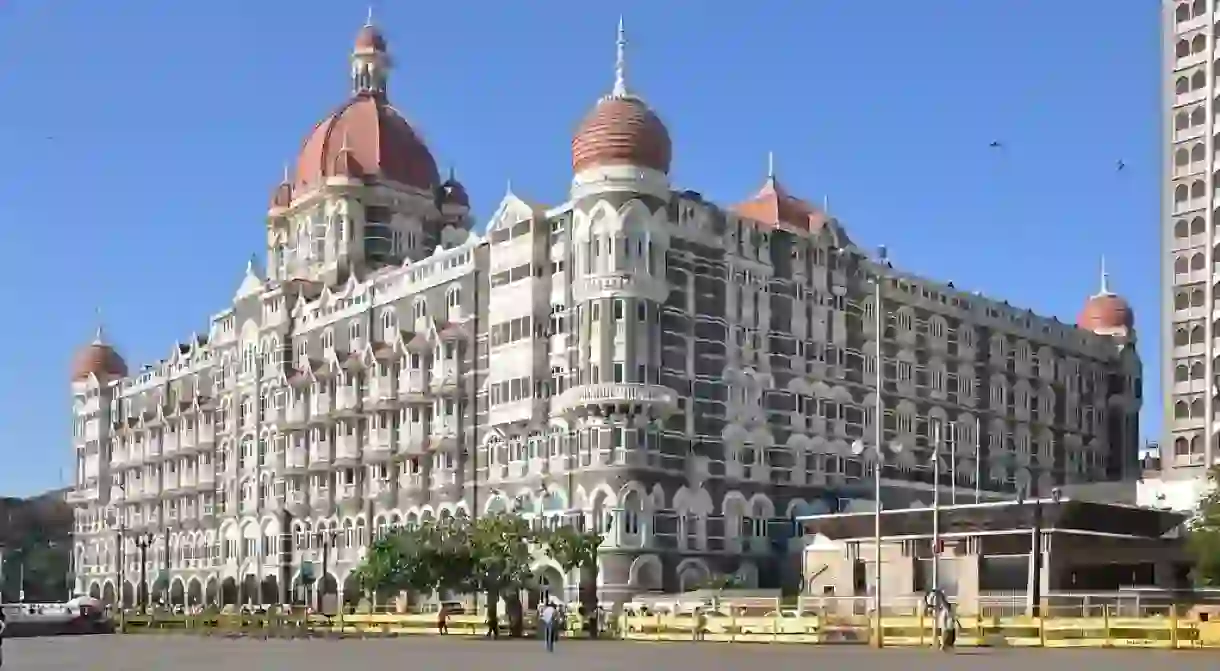The Best of Mumbai Architecture in 7 Structures

Mumbai’s architecture is as diverse and majestic as the city itself. From Victorian Gothic to ancient Indian, the sheer range of architectural styles displayed in the city’s buildings is bound to leave anyone awestruck. We have rounded up 7 structures in the city that are particularly noteworthy.
The Taj Mahal Palace
Designed by architects Sitaram Khanderao Vaidya and D. N. Mirza, Mumbai’s most iconic hotel has awed visitors from around the world for more than a century now. The Arabian Sea-facing hotel was built under Jamshetji Tata in 1903 and drew inspiration from around the world – showcasing striking Victorian Gothic, Romanesque and Edwardian elements. The Taj Mahal Palace’s prominent dome served as the first clear marker of the Bombay harbour until the construction of the nearby Gateway of India.
Gateway Of India
Memorial

This Mumbai landmark was meant to commemorate the visit of King George V and Queen Mary to Mumbai in 1911, but construction only began in 1915. Designed by Scottish architect George Wittet, the Gateway of India was built on land reclaimed from the sea by 1924. Taking much inspiration from architecture around the country, the structure blends in Islamic and Hindu styles along with Roman influences.
Chhatrapati Shivaji Maharaj Vastu Sangrahalaya
Museum

The foundation stone of this landmark museum was laid in 1906 by the Prince of Wales (later King George V). Currently Mumbai’s primary museum, the Chhatrapati Shivaji Maharaj Vastu Sangrahalaya features some of the most striking architecture you will find in South Mumbai. Blending Indian and Saracenic architectural styles, and taking inspiration from The Taj Mahal in Agra as well as the Gol Gumbaz in Bijapur, the stunning building was designed by Scottish architect George Wittet.
Chhatrapati Shivaji Terminus Railway Station
Train Station

Designed by British architect Frederick William Stevens, the Chhatrapati Shivaji Terminus is one of the most iconic landmarks in Mumbai today. The railway station first opened in 1888 and continues to serve millions of daily commuters to this day. The UNESCO World Heritage site features impressive High Victorian Gothic and Indian architectural styles including turrets, pointed arches and a high central dome with a prominent female figure holding a torch pointing upwards in her right hand and a spoked wheel in the other.
Rajabai Clock Tower Mumbai
This iconic 85m clock tower in Fort was modelled after the Big Ben in London by English architect George Gilbert Scott. Completed in 1878, the tower’s entire costs were covered by Premchand Roychand, a successful broker and founding member of the Bombay Stock Exchange, on the condition that it be named after his mother Rajabai. Built blending Venetian and Gothic styles of architecture, the structure was at one point the tallest in Mumbai.
Global Vipassana Pagoda
School, Yoga Studio

Modelled after the Shwedagon Pagoda in Yangon, Myanmar, the Global Vipassana Pagoda in Borivali is bound to stun anyone with its impeccable architecture and strong message. Known to contain the world’s largest stone dome built without any supporting pillars, the structure’s dome is twice the size of the the Gol Gumbaz Dome in Bijapur which was previously considered to be the largest hollow stone monument in the world. The stunning pagoda was built to express gratitude to Gautama Buddha and to serve as a reminder of his teachings.
Banganga Tank
This ancient structure in South Mumbai serves as a reminder that great architecture isn’t a recent occurrence in Mumbai. Built in the 1127 AD, the Banganga tank and its surrounding Walkeshwar Temple Complex is a stunning sight that continues to inspire artists across mediums. Though the complex was destroyed by the Portuguese during the 16th century, it was rebuilt with funds from Rama Kamath, a Mumbai businessman and philanthropist, to its current form in the 18th century.













